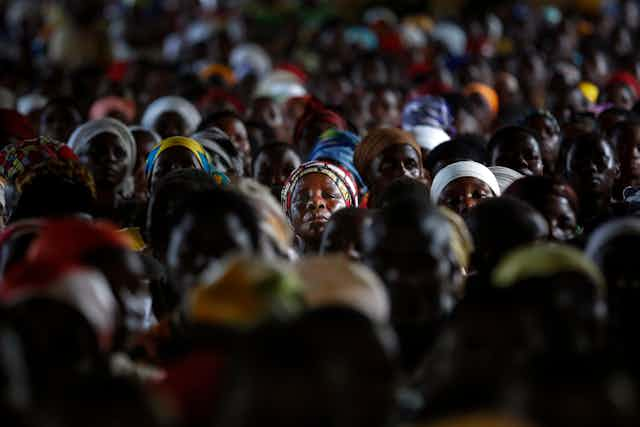Burundi has been caught in a violent political nightmare since 2015, ignited by President Nkurinziza’s questionable re-election for a third term. The ensuing violence has claimed many lives and blighted many more.
The UN’s refugee agency, UNHCR, is reporting multiple counts of rape of both men and women, and reports of increased violence by Imbonerakure, the youth wing of the ruling party. Arrests, disappearances and beatings continue unabated, and it seems there’s no peace in sight for the foreseeable future.
Despite its scale, the Burundian crisis has received little media attention outside of Africa. The probability of the troubles descending into an ethnic conflict is now a very real one, and the potential repercussions are not being recognised beyond the immediate region.
But it would be a disaster of very serious proportions if this was allowed to escalate, not least because it would be extremely difficult to stop the violence from spreading to Rwanda, which could undo 20 years of painstaking work by all parties to move on from that country’s 1994 genocide.
Yet given the general lack of effort in peacekeeping to date, it seems the legacy of Rwanda and the lessons supposedly learned have been quickly forgotten. The links to Rwanda are particularly important when one considers that a leaked UN report suggests Rwanda is providing groups such as Imbonerakure with weapons and housing camps.
Worse yet, the Burundian crisis is unfolding during an extremely difficult time for the other countries in its neighbourhood.
In search of safety
Large swathes of the African continent are in the grip of the worst El Niño weather pattern in recent years, which has created a devastating famine. An estimated 50m people will be in urgent need of food by the end of 2016. In Burundi, the weather pattern has resulted in excessive rain and flooding in numerous provinces, destroying more than 5,000 houses and ruining swathes of agricultural land.
The result is displacement on a massive scale to Rwanda, Uganda and especially Tanzania, which now hosts a population of just over 207,000 refugees, 137,000 of whom are Burundian citizens.
But look at a map of east and southern Africa today and it’s difficult to see where these various groups of desperate people can safely go. Somalia and South Sudan are both highly unstable. Kenya has announced it will close its largest refugee camps and expel hundreds of thousands of mostly Somali refugees. Tanzania is already stretched beyond capacity. Rwanda and Uganda, meanwhile, are already hosting many Burundians and are reluctant to take many more.
Many Burundians who’ve fled to Tanzania are living in awful conditions. The current state of the camps in Nyarugusu, Nduta and Mtendeli is dire. Local authorities are overwhelmed, struggling to provide adequate basic services of water, sanitation, shelter, health and education to this ever-growing population. Cholera has already killed a number of people.
There are also serious protection concerns in the camps. The International Rescue Committee reports that two to three women are raped each week, and there are stories of militias crossing the border from Burundi to hunt opposition members in the camps.
UNHCR requires immediate assistance, both in terms of greater capacity from partner organisations and a serious injection of money. As of May 2016, its Burundi mission suffers a funding shortfall of US$127m, meaning it’s only 28% funded. Estimates from UNHCR state that if the exodus from Burundi continues, there will be 170,000 Burundian refugees in Tanzania by December 2016. Vast resources are needed to provide this many people with basic services, and Tanzania is already stretched to capacity.
For some Burundians, this is their second or even third displacement. Although there has been no large-scale research conducted on this as yet, anecdotal evidence suggests that many of them do not want to go back to Burundi, even if the fighting stopped now.
Most of the world’s civilian deaths are thought to occur in “conflict traps”, where armed clashes are resolved and then relapse into further violence, the cycle claiming more and more lives. This is what’s happening in Burundi today – and the international community needs to step in before the sad history of the region repeats itself.
Running out of time
A round of peace talks, led by former Tanzanian President Benjamin Mkapa, has just concluded without agreement. The talks were effectively doomed before they began by the exclusion of the opposition group the National Council for the Restoration of Arusha Agreement and Rule of Law (CNARED).
To prevent further violence, a peacekeeping force must be dispatched to Burundi, either in the form of a renewed African Prevention and Protection mission (MAPROBU), most likely using East African Standby Forces, or a UN peacekeeping mission.
The original plan for sending MAPROBU forces to Burundi in January 2016 was stopped when Nkurinziza stated that any intervention would be considered an attack on Burundian soil and “every Burundian would rise to fight against it”. That must not be the final word on the matter.
To date, the African Union has arguably been more of a lame duck than a force to be reckoned with. It’s now time for it to finally prove its worth, before this disaster spirals even further out of control.
This article has been updated to clarify that Kenya plans on closing its largest refugee camp, not all its camps.

